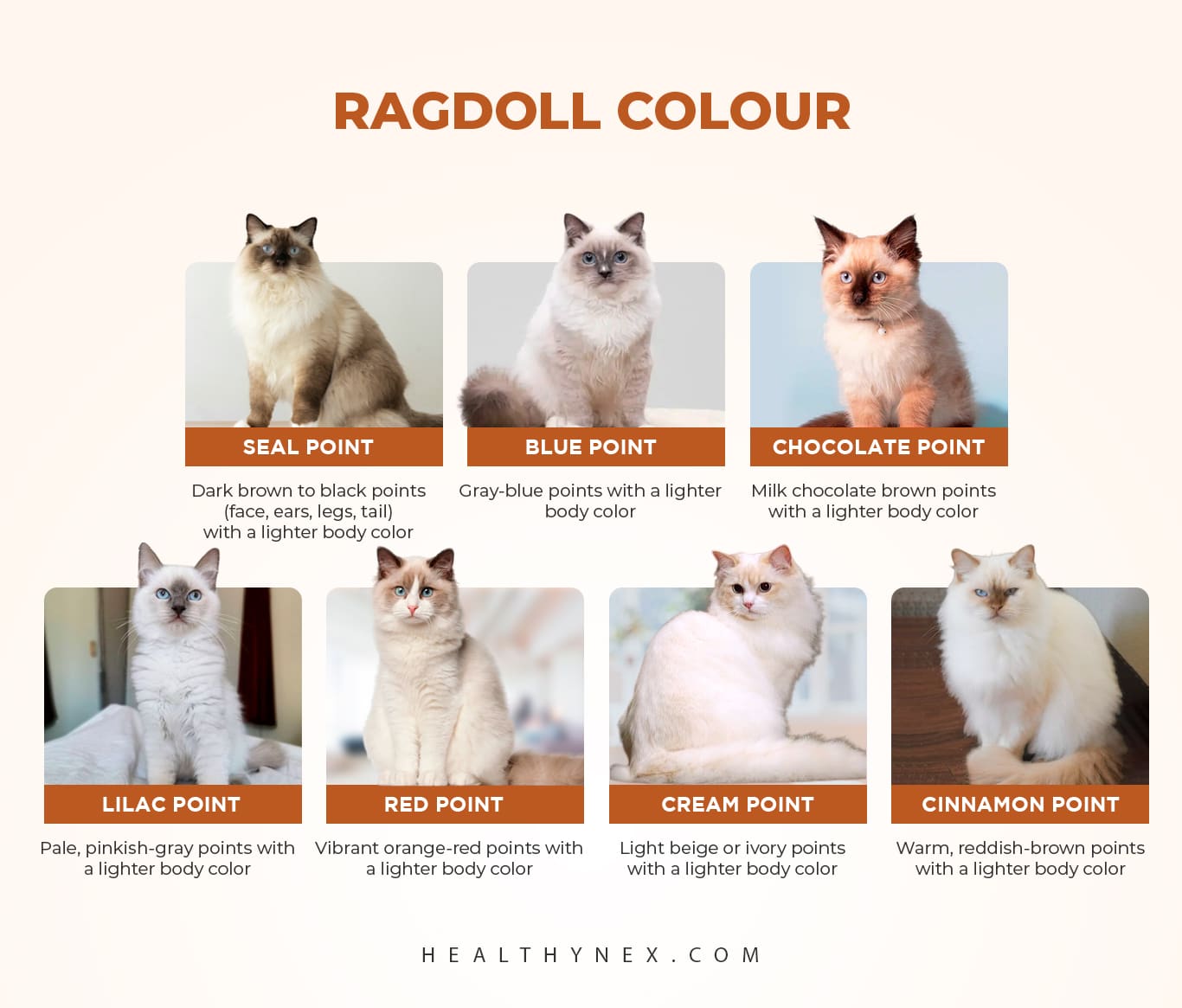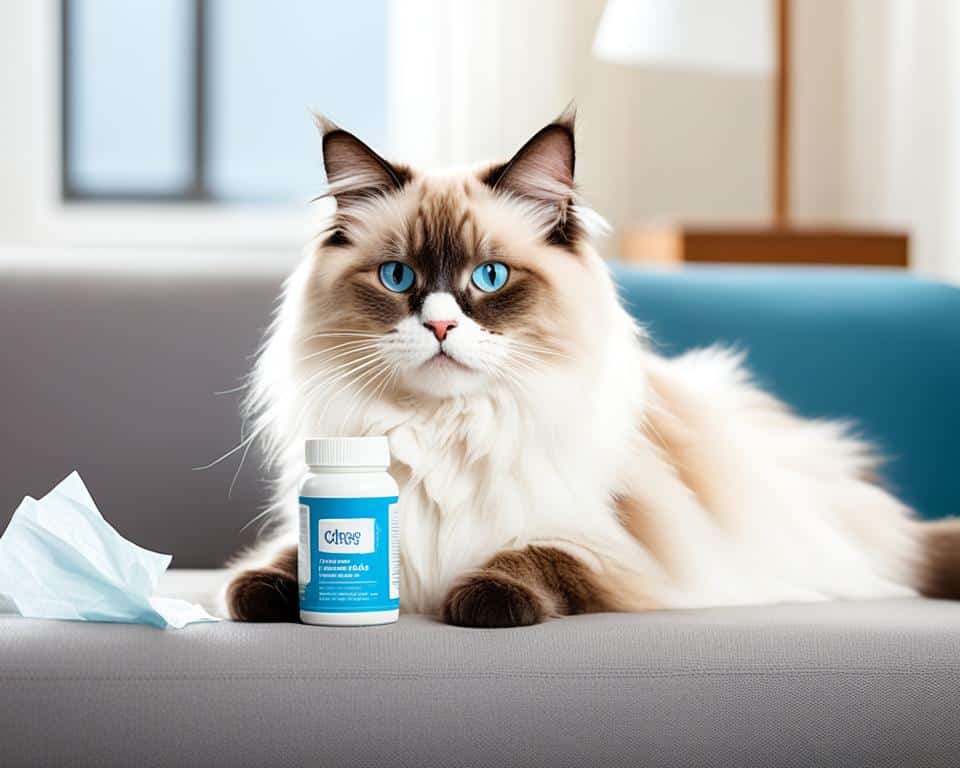As a Ragdoll cat breeder, one of the most important aspects of your work is predicting and breeding Ragdoll cats with specific color patterns. Understanding the different color patterns and ragdoll growth stages is crucial to ensure the best outcome when breeding.
In this article, we will provide a comprehensive guide to predicting and breeding Ragdoll cats, specifically focusing on the Ragdoll colour chart, Ragdoll colored patterns, and the growth stages and weight of Ragdoll cats.
Understanding the Ragdoll colour chart 📊, Ragdoll cat color, Ragdoll color patterns, and the growth stages and weight of Ragdoll cats is crucial for any Ragdoll cat breeder. By using this comprehensive guide, you can predict and breed Ragdoll cats with specific color patterns, ensuring the best outcome for your ragdoll breeding color program.

Common Colors of Ragdoll
The Ragdoll colour chart is a tool used by Ragdoll breeders to help predict the color of Ragdoll cats. The chart displays the possible color combinations of Ragdoll cats and their corresponding patterns. It is important to note that predicting the exact color of a Ragdoll cat 😸 is not always possible, as there are many factors that can influence the final color.
- Seal: a dark brown color
- Blue: a pale greyish-blue color
- Chocolate: a lighter brown color
- Lilac: a pale, pinkish-grey color
- Red: a bright, orange-red color
- Cream: a pale, creamy-white color
- Tortie: a mix of red and cream or blue and cream colors
- Blue cream: a mix of blue and cream colors
It is important to note that the exact shade of each color can vary based on the cat’s genetics and environment.
| Color | Description | Characteristics |
|---|---|---|
| Seal Point | Dark brown to black points (face, ears, legs, tail) with a lighter body color | The most common color of ragdoll cats, with a sweet and affectionate personality |
| Blue Point | Gray-blue points with a lighter body color | A popular color variation with a gentle and relaxed demeanor |
| Chocolate Point | Milk chocolate brown points with a lighter body color | A rare and unique color variation with a playful and curious personality |
| Lilac Point | Pale, pinkish-gray points with a lighter body color | A rare and delicate color variation with a gentle and affectionate nature |
| Red Point | Vibrant orange-red points with a lighter body color | A rare and unique color variation with a playful and energetic personality |
| Cream Point | Light beige or ivory points with a lighter body color | A rare and delicate color variation with a sweet and affectionate personality |
| Cinnamon Point | Warm, reddish-brown points with a lighter body color | A rare color variation with a playful and curious personality |
| Fawn Point | Light tan or beige points with a lighter body color | A rare color variation with a sweet and affectionate personality |
| Tortie Point | A blend of red, cream, and brown fur with darker points | A rare and unique color variation with a sassy and independent personality |
| Lynx Point | Tabby-like stripes on the points, with a lighter body color | A rare and unique color variation with a playful and curious personality, often referred to as “striped” or “tabby” ragdolls |
| Mink | A darker, richer coat color than traditional ragdolls | A semi-rare color variation with a silky and plush coat, often referred to as “pointed mink” or “solid mink” depending on the color of the points |
Most Popular Ragdoll Color Prediction
In addition to color, Ragdoll cats also come in a variety of patterns, including:
- Colorpoint: the cat has a lighter body with darker points on the face, ears, paws, and tail
- Mitted: the cat has white paws and a white chin, with a darker body and face
- Bi-color: the cat has a white body with darker markings on the face, ears, tail, and legs
- Lynx: the cat has a striped pattern on its face and legs, with darker points on the ears, tail, and paws
It is important to note that the exact ragdoll color pattern can also vary based on genetics and environment.
“Like all pure creatures, cats are practical.
William S. Burroughs
Rare Ragdoll Colors
Ragdoll cats are known for their beautiful and soft fur, as well as their friendly and affectionate personalities. While the traditional ragdoll colors of seal, blue, chocolate, and lilac are the most common, there are also some rare and unique color variations that are sought after by ragdoll enthusiasts.
Here are some of the rare ragdoll colors:
- Cream: Cream ragdolls have a light beige or ivory-colored coat, which is caused by a dilution gene that affects the production of pigment.
- Red: Red ragdolls have a vibrant orange-red coat, which is the result of a recessive gene that affects the production of pigment.
- Cinnamon: Cinnamon ragdolls have a warm, reddish-brown coat that is caused by a combination of the dilution gene and the red gene.
- Fawn: Fawn ragdolls have a light tan or beige coat, which is caused by the dilution gene and a recessive gene that affects the production of pigment.
- Tortie: Tortie ragdolls have a beautiful blend of red, cream, and brown fur, which is caused by a combination of the red and dilution genes.
- Lynx: Lynx ragdolls have a unique tabby pattern on their fur, which is caused by a dominant gene that affects the distribution of pigment.
- Mink: Mink ragdolls have a darker, richer coat color than traditional ragdolls, which is caused by a semi-recessive gene that affects the texture and color of the fur.
While these colors are rare, they are not impossible to find. Ragdoll breeders who specialize in rare colors can provide information on the availability and cost of these unique cats.
It’s important to note that the rarity of these colors does not affect the health or temperament of the cat. Ragdoll cats are generally healthy and friendly regardless of their coat color.
Final Words
If you’re considering adding a ragdoll cat to your family and are interested in a rare color variation, it’s important to do your research and find a reputable breeder who can provide information and support throughout the process.



